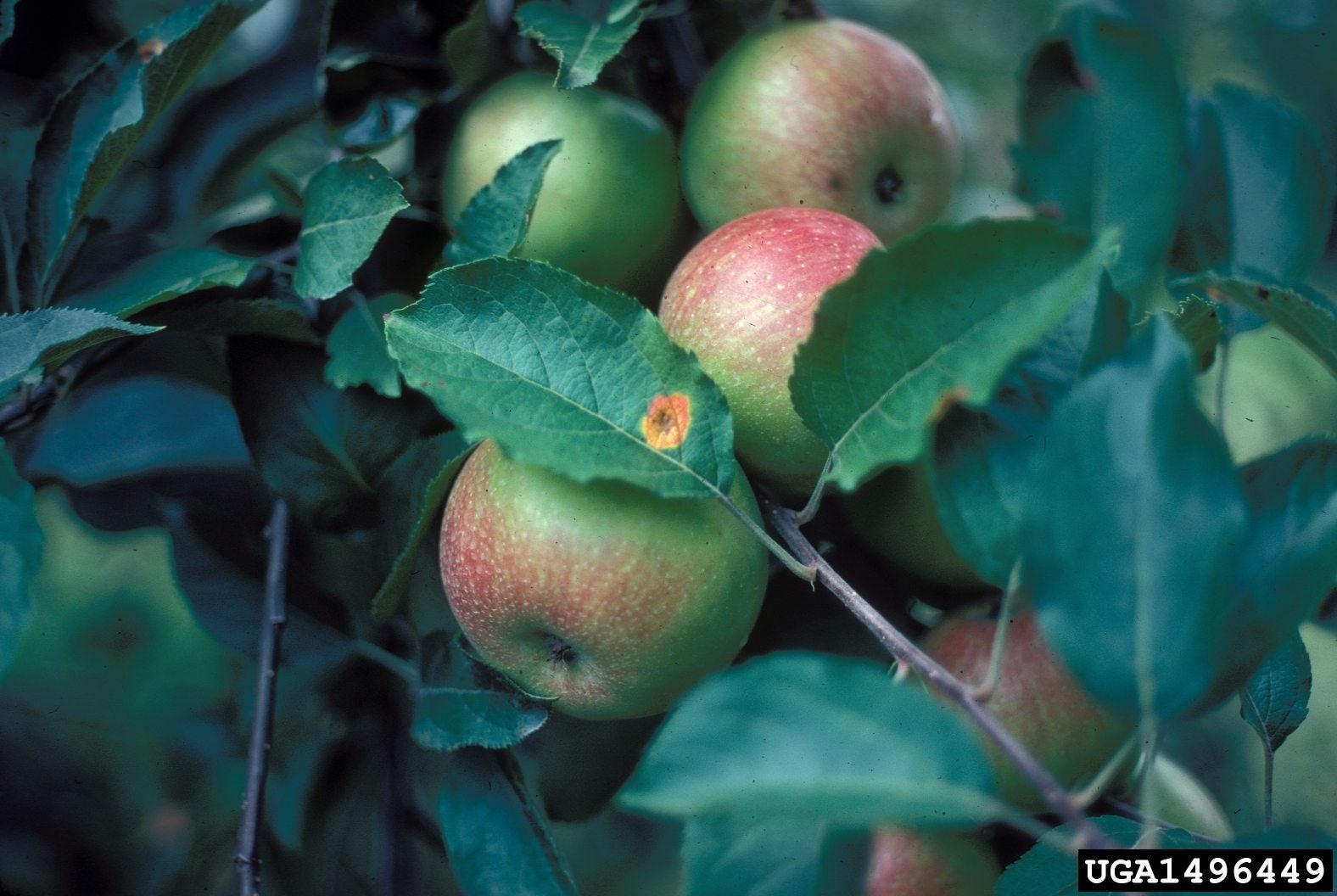Apples With Cedar Apple Rust: How Does Cedar Apple Rust Affect Apples


Growing apples is usually pretty easy, but when a disease strikes it can quickly wipe out your crop and infect other trees. Cedar apple rust in apples is a fungal infection that affects both the fruit and the leaves and affects apples and crabapples alike. The infection is not uncommon but control is possible.
Cedar Apple Rust on Apple Trees
Cedar apple rust is a fungal infection caused by the species Gymnosporangium juniper-virginianae. It is often confused with other rust infections but is completely different. What makes cedar apple rust really unique is its life cycle. The fungus requires two completely different host plants to complete a cycle. It infects apples and crabapples in the spring and then juniper plants in the late summer. The fungus is much more damaging to its apple hosts than its juniper hosts.
How Does Cedar Apple Rust Affect Apples?
The infection can be severe and can ruin your apple crop if not controlled. Even more moderate infections can be damaging. The damage to leaves will cause them to drop early, especially in dry conditions. After a few seasons, the trees become weak and the apple crop will drop off. The infection also reduces the production of fruit buds on a tree.
Managing Cedar Apple Rust in Apples
Apples with cedar apple rust need special care to overcome the disease and still produce fruit. First, check to see if you have juniper species near your apple trees. If they are infected, they will produce galls in the spring and summer that can grow quite large. They produce distinctive orange tendrils that are hard to miss. Spores from these can infect any nearby apple trees. One way to manage the disease is to remove or destroy any nearby junipers. Or you can just monitor them for galls and either destroy the plant or prune off and destroy the branches with galls. Another way to control for cedar apple rust is to grow varieties of apple that are resistant to the infection: Red Delicious, McIntosh, Winesap, Empire, and others. A fungicide spray can also be used. Your local nursery can help you find the appropriate spray. However, prevention is usually a better way to control this disease in apple trees. About 1,000 feet (305 m.) between apples and juniper species is enough to protect your trees. Also, keep in mind that a low level of infection will not affect your crop very much.
Gardening tips, videos, info and more delivered right to your inbox!
Sign up for the Gardening Know How newsletter today and receive a free copy of our e-book "How to Grow Delicious Tomatoes".

Mary Ellen Ellis has been gardening for over 20 years. With degrees in Chemistry and Biology, Mary Ellen's specialties are flowers, native plants, and herbs.
-
 Get Ready For A Summer Of Hummers! Grow These Full Sun Hummingbird Plants and Flowers
Get Ready For A Summer Of Hummers! Grow These Full Sun Hummingbird Plants and FlowersIf you’re lucky enough to enjoy a sunny backyard, make sure you are maxing out on your pollinator opportunities and grow these full sun hummingbird plants and flowers
By Tonya Barnett
-
 12 Lush Alternatives To A Lawn For Sustainable Spaces
12 Lush Alternatives To A Lawn For Sustainable SpacesAlternatives to a lawn are beautiful and also beneficial to your local ecosystem and its pollinators. Explore our top picks for plants to replace grass.
By Tonya Barnett